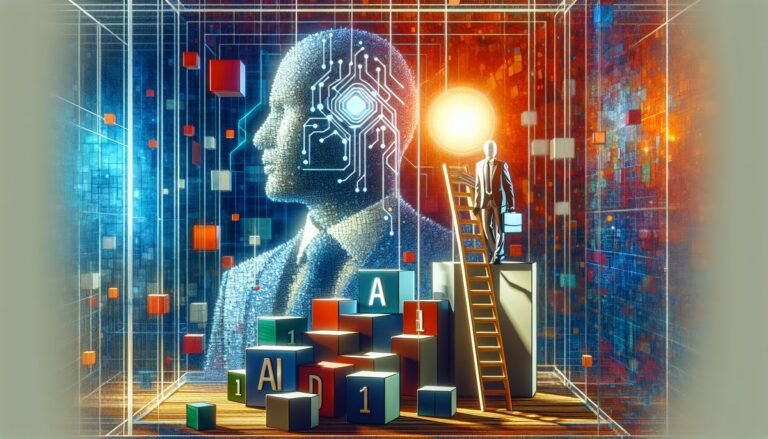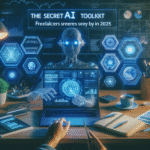Imagine stepping into a classroom where technology and teaching blend seamlessly, crafting an educational experience like never before. In 2025, AI Teacher Training is not just a buzzword—it’s a revolution reshaping how educators are prepared to face the challenges of modern classrooms. From personalized learning paths to real-time feedback systems, the integration of Artificial Intelligence is empowering teachers with tools and insights that were once the realm of science fiction. This breakthrough era in teacher training is not only enhancing instructional strategies but also fostering a more adaptable, responsive educational environment. Join us as we delve into eight pioneering ways AI is spearheading this transformation, offering educators unprecedented opportunities to grow and succeed in their vital roles. Whether you’re an aspiring teacher or a seasoned educator, these innovations promise to redefine the very essence of teaching and learning.
1. Embracing AI for Personalized Learning
Microsoft, OpenAI, and Anthropic are spearheading the movement to integrate Artificial Intelligence into classrooms by investing heavily in AI teacher training. One of the most promising applications of AI in education is personalized learning. This approach leverages AI algorithms to tailor educational content to fit each student’s unique learning pace and style. By training teachers to utilize these tools effectively, the aim is to create a more engaging and efficient learning environment.
Imagine a classroom where each student receives a custom curriculum that addresses their strengths and weaknesses. Teachers, equipped with AI insights, can offer more individualized attention, fostering a deeper understanding of subjects. Personalized learning not only empowers students but also enhances the teaching process, making it a win-win scenario for both parties.
2. Enhancing Teacher-Student Interaction
AI teacher training goes beyond just introducing technology; it focuses on enriching the teacher-student dynamic. With AI tools, teachers can gain invaluable insights into student behavior and progress, allowing for more informed and impactful interactions. The use of AI in classrooms can help identify students who need additional support or those who are ready for more challenging material.
For instance, AI-driven analytics can alert teachers to students who might be struggling with specific topics, enabling timely intervention. This means teachers can spend less time on administrative tasks and more on nurturing their students’ growth. By investing in AI teacher training, Microsoft, OpenAI, and Anthropic are setting the stage for a more connected and responsive educational experience.
3. Automating Administrative Tasks
One of the most significant benefits of AI in education is its ability to automate mundane administrative tasks, freeing up teachers to focus on teaching. AI tools can handle tasks such as grading, attendance tracking, and scheduling, which traditionally consume a considerable amount of a teacher’s time. Through comprehensive AI teacher training, educators can learn to leverage these tools effectively, streamlining their workload.
Consider a scenario where teachers have instant access to automated reports on student performance. This not only reduces administrative burdens but also provides teachers with timely data to adjust their teaching strategies. By investing in this aspect of AI teacher training, the tech giants are ensuring that teachers can dedicate more energy to fostering student engagement and success.
4. Facilitating Continuous Professional Development
AI teacher training is not just about immediate classroom applications; it also focuses on continuous professional development. AI-powered platforms can offer personalized learning paths for teachers, keeping them abreast of the latest educational trends and technologies. This kind of ongoing training ensures educators remain well-equipped to handle the evolving demands of teaching.
With personalized professional development, teachers can explore new teaching methodologies and techniques at their own pace. Such opportunities for growth not only enhance teacher satisfaction but also translate into improved student outcomes. Microsoft, OpenAI, and Anthropic’s investment in this area highlights their commitment to fostering a future-ready teaching workforce.
5. Encouraging Collaborative Learning Environments
The push for AI teacher training also aims to cultivate collaborative learning environments. AI can facilitate collaboration among students by providing platforms for virtual classrooms, shared projects, and peer feedback. Teachers trained in AI tools can effectively guide students in using these platforms to enhance their collaborative skills.
Imagine students from diverse backgrounds working together on a project, exchanging ideas and learning from each other, all orchestrated by AI-driven platforms. This not only prepares students for real-world scenarios but also nurtures a culture of inclusivity and teamwork. The tech giants’ investment in AI teacher training is pivotal in bringing this vision to life.
6. Bridging Educational Gaps
AI has the potential to bridge significant educational gaps, particularly in underserved communities. By training teachers to use AI tools, Microsoft, OpenAI, and Anthropic are working towards creating equitable learning opportunities for all students. AI can provide access to high-quality educational resources, regardless of geographical or socio-economic barriers.
For instance, AI can offer virtual tutoring for students in remote areas, ensuring they receive the same level of education as their urban counterparts. By focusing on AI teacher training, these companies are making strides toward leveling the educational playing field, ensuring that every student has the chance to succeed.
7. Promoting Data-Driven Decision Making
Data-driven decision-making is at the heart of effective teaching strategies, and AI teacher training equips educators with the skills to harness data insights. AI tools can analyze vast amounts of educational data to identify trends and patterns, helping teachers make informed decisions about curriculum development and student engagement.
Teachers can use AI-generated data to refine their teaching methods, ensuring they meet the needs of their students. This proactive approach to teaching fosters a culture of continuous improvement and innovation in education. By investing in AI teacher training, the tech giants are empowering educators to become more strategic and data-savvy.
8. Preparing Students for a Tech-Driven World
The ultimate goal of AI teacher training is to prepare students for a future where technology plays a central role. By integrating AI into the classroom, educators can expose students to the technologies that will shape their careers and daily lives. Teachers trained in AI can guide students in developing critical skills such as problem-solving, digital literacy, and adaptive learning.
As students become more familiar with AI and its applications, they are better prepared to navigate a rapidly changing world. Microsoft, OpenAI, and Anthropic’s investment in AI teacher training is a forward-thinking approach that ensures students are equipped with the tools they need to thrive in the digital age.
Pioneering the Future: Empowering Educators with AI
As Microsoft, OpenAI, and Anthropic channel substantial investments into AI training for educators, we stand on the brink of a transformative era in education. The initiatives highlight a commitment to reshaping how learning environments function, equipping teachers with the tools to harness AI’s potential Artificial Intelligence for personalized education and enhanced administrative efficiency. This strategic move not only enhances educational frameworks but also empowers educators to push beyond traditional methods, ensuring that students remain at the forefront of innovation.
Looking ahead, the integration of AI in the classroom promises to revolutionize teaching and learning. By embracing this technological evolution, educators can inspire a generation prepared for a future defined by rapid technological advancements. The road ahead is rich with opportunities, urging the educational sector to keep pace with technological trends and explore unconventional pathways to education, ultimately fostering a more dynamic and engaging learning experience.






